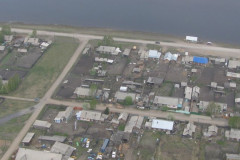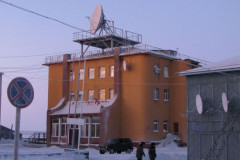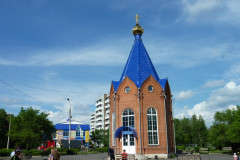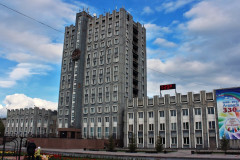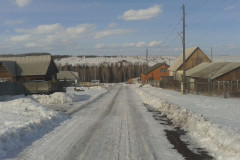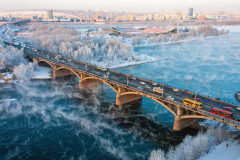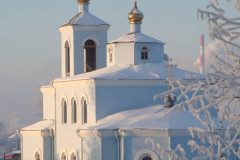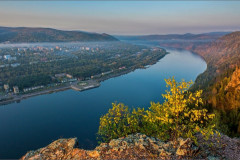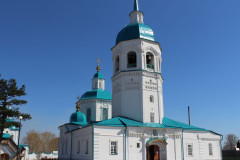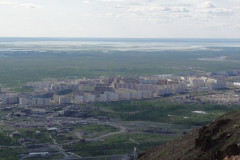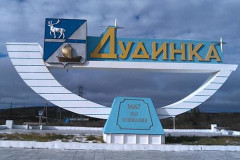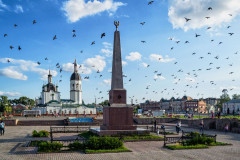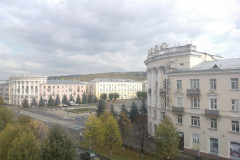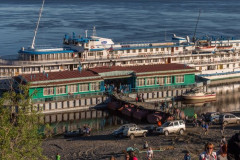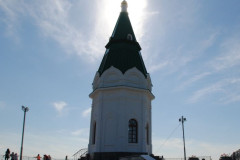Krasnoyarsk Region
Description
Krasnoyarsk Krai is a federal subject of Russia (a krai). It is the second largest federal subject after the Sakha Republic, Russia's largest krai, and the third largest subnational governing body by area in the world, occupying an area of 2,339,700 square km, which is 13% of the country's total territory. The administrative center of the krai is the city of Krasnoyarsk. Population: 2,828,187 (2010 Census).
Geography
The krai lies in the middle of Siberia, and occupies nearly half of the Siberian Federal District, almost splitting it in half, stretching 3,000 km from the Sayan Mountains in the south along the Yenisei River to the Taymyr Peninsula in the north. It borders Tyumen, Tomsk, Irkutsk, and Kemerovo Oblasts, the Republic of Khakassia, the Tuva Republic, and the Sakha Republic, and the Kara Sea and Laptev Sea of the Arctic Ocean in the north.
The krai is located in the basin of the Arctic Ocean; a great number of rivers that flow through the krai drain into it eventually. The main rivers of the krai are the Yenisei, and its tributaries (from south to north): the Kan, the Angara, the Podkamennaya Tunguska, and the Nizhnyaya Tunguska.
There are also several thousand lakes in the krai. The largest lakes include Beloye, Belyo, Glubokoye, Itat, Khantayskoye, Labas, Lama, Pyasina, Taymyr, and Yessey. The rivers and lakes are rich with fish.
The climate is strongly continental with large temperature variations during the year. For the central and southern regions where most of the krai's population lives, long winters and short, hot summers are characteristic. The territory of Krasnoyarsk krai experiences conditions of three climate belts: Arctic, Subarctic, and moderate. While in the north there are less than 40 days with temperature higher than 10 °C (50 °F), in the south there are 110–120 such days.
The average temperature in January is −36 °C (−33 °F) in the north and −18 °C (0 °F) in the south. The average temperature in July is +10 °C (50 °F) in the north and +20 °C (68 °F) in the south. The annual precipitation is 316 millimeters (12.4 in) (up to 1,200 millimeters (47 in) in foothills of the Sayan Mountains). Snow covers the central regions of the krai from early November until late March. The peaks of the Sayans higher than 2,400–2,600 m and those of the Putorana Plateau higher than 1,000–1,300 m are covered with permanent snow. Permafrost is widespread, especially in the north.
The highest point of the krai is Grandiozny Peak in the East Sayan Mountains at an elevation of 2,922 meters (9,587 ft).
History
According to archeologists the territory of Siberia was settled around 40,000 BCE. The grave-mounds and monuments of the Scythian culture in Krasnoyarsk Krai belong to the 7th century BCE and are ones of the oldest in Eurasia. Among other things a prince's grave Kurgan Arshan exposed in 2001 is known.
The Russian settlement of the area (by Cossacks mostly) began in the 17th century. After the construction of the Trans-Siberian Railroad the Russian colonization of the area strongly increased.
During both the Tsarist and the Bolsheviks' regimes the territory of Krasnoyarsk Krai was used as a place of exile of political enemies of current government. The first leaders of the Soviet state Vladimir Lenin and Joseph Stalin were in exile on the territory of the nowadays krai in 1897–1900 and in 1903 respectively. In Stalin's era numerous Gulag camps were in the region.
In 1822, Yeniseysk Governorate was created with Krasnoyarsk as its administrative center that covered the territory very close to the one of the current krai.
On June 30, 1908, in the basin of the Podkamennaya Tunguska River, there occurred a powerful explosion most likely to have been caused by the air burst of a large meteoroid or comet fragment at an altitude of 5–10 km above Earth's surface. The force of the explosion is estimated to be about 10–15 megatons. It flattened more than 2,000 square km of pine forest and killed thousands of reindeer.
Krasnoyarsk Krai was created in 1934 after disaggregation of West Siberian and East Siberian Krais and then included Taymyr and Evenk Autonomous Okrugs and Khakas Autonomous Oblast. In 1991, Khakassia separated from the krai and became a republic within the Russian Federation.
On January 1, 2007, following a referendum on the issue held on April 17, 2005, territories of Evenk and Taymyr Autonomous Okrugs were merged into the krai.
Nature and ecology
Many important industrial cities of Krasnoyarsk krai, such as Krasnoyarsk, Norilsk, Achinsk, Kansk, Zheleznogorsk, and Minusinsk, suffer from environmental pollution.

